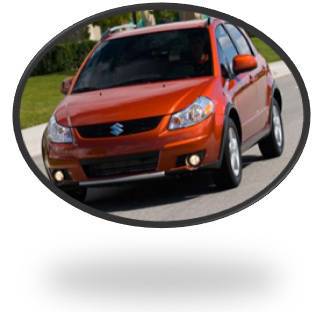4x4 Car
Common Winter Driving Mistakes
 It was one of the most terrifying moments in all the years I’d been driving. My family and I were heading over the mountain just after a snowstorm. The highway was clear but wet, and with the falling night temperatures I knew running into black ice was possible. I kept to the right lane of the road and drove slowly, and things were going well. Then a semi truck passed us to the left, spraying the windshield with slush. I turned on the wipers and flicked the switch to spray the wiper fluid – but nothing came out. The wipers spread snow and dirt across the windshield, cutting my visibility down to zero. As I struggled to maintain control of our minivan while unable to see the road, my husband screamed like a girl. The kids in the backseat erupted into fearful cries. Amid the chaos, I managed to keep my head, rolled down the windows, and navigated to the shoulder by following the road lines. Fortunately, the road was clear enough to see the markers, and even more luckily, once I’d parked the car and calmed everyone down, we realized we were within a mile of a turnoff with a gas station. Turning on the emergency lights and driving with my head out the window, we slowly made our way off the freeway and bought more wiper fluid.
It was one of the most terrifying moments in all the years I’d been driving. My family and I were heading over the mountain just after a snowstorm. The highway was clear but wet, and with the falling night temperatures I knew running into black ice was possible. I kept to the right lane of the road and drove slowly, and things were going well. Then a semi truck passed us to the left, spraying the windshield with slush. I turned on the wipers and flicked the switch to spray the wiper fluid – but nothing came out. The wipers spread snow and dirt across the windshield, cutting my visibility down to zero. As I struggled to maintain control of our minivan while unable to see the road, my husband screamed like a girl. The kids in the backseat erupted into fearful cries. Amid the chaos, I managed to keep my head, rolled down the windows, and navigated to the shoulder by following the road lines. Fortunately, the road was clear enough to see the markers, and even more luckily, once I’d parked the car and calmed everyone down, we realized we were within a mile of a turnoff with a gas station. Turning on the emergency lights and driving with my head out the window, we slowly made our way off the freeway and bought more wiper fluid.
 It sounds like something that happens only in comedies, and at first I thought my husband was merely making a very bad joke at the worst possible time. No, it turned out he was genuinely panicking. There were a few mistakes we made that could have ended in disaster, but it was a combination of driving factors such as the clear road, sparse traffic, and keeping my head that got us safely off the highway. Thinking back on that night, I realized the things we could have done differently that would have eliminated or greatly reduced the risks we were taking in bad winter road conditions.
It sounds like something that happens only in comedies, and at first I thought my husband was merely making a very bad joke at the worst possible time. No, it turned out he was genuinely panicking. There were a few mistakes we made that could have ended in disaster, but it was a combination of driving factors such as the clear road, sparse traffic, and keeping my head that got us safely off the highway. Thinking back on that night, I realized the things we could have done differently that would have eliminated or greatly reduced the risks we were taking in bad winter road conditions.
Not Being Prepared
We’d filled up the car, made sure the tires were safe, and packed our chains, but had forgotten a crucial element that could have ended in tragedy. When the roads are wet, it’s almost guaranteed your windows will get wet, too. Make sure you have plenty of wiper fluid to keep your windshield clear. It’s also a good idea to bring extra blankets, snacks, and emergency lights when driving during or after a storm, in case you end up stranded.
Driving At Night
 I’d correctly assumed that driving over the mountain at night would mean less traffic, but we were trading that for dangerous conditions such as less visibility and black ice. If you must drive at night, make absolutely sure you’re well rested and undertake safe driving procedures in winter conditions. Drive slower at night, especially if the roads are wet or slushy.
I’d correctly assumed that driving over the mountain at night would mean less traffic, but we were trading that for dangerous conditions such as less visibility and black ice. If you must drive at night, make absolutely sure you’re well rested and undertake safe driving procedures in winter conditions. Drive slower at night, especially if the roads are wet or slushy.
Driving Unsafely For The Road Conditions
Aside from the obvious mistake of not preparing my car, I believe I was driving safely for the winter conditions by keeping to the right, driving slower, being observant, and taking turns carefully. But many people, especially drivers of 4x4 cars with snow tires and ABS, assume their vehicles are accident-proof if they’re equipped with special all-weather features. While it’s true that these safety features add to the overall safety and traction of a vehicle in winter weather, it doesn’t mean one can drive as if the road conditions were normal. The extra traction in 4x4’s and snow tires are mainly for the purpose of keeping a vehicle from getting stuck in snow or mud, and won’t prevent it from skidding through a stop or a hard turn.
If you take the necessary precautions and drive carefully when road conditions are less than ideal, you reduce the chance of getting into an accident. It’s also crucially important to keep calm and regain control of your vehicle if you do end up in a skid or suddenly lose your visibility. Strapping panicky spouses to the roof of the car during your next road trip, although tempting, is not advised.
4x4 Car Related Videos: